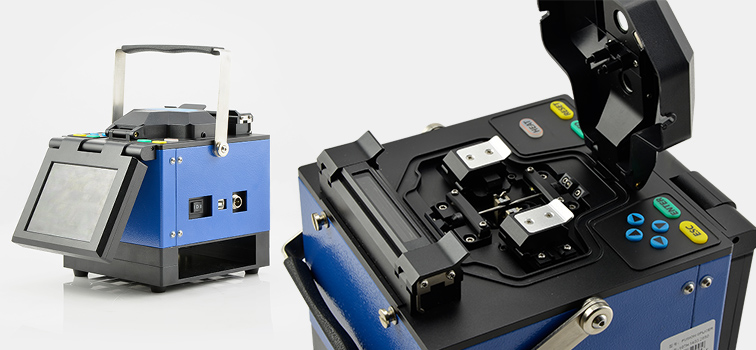When
deploying a FTTH network, subscribers must choose the right drop cable
interconnect solution. So they need to decide whether to use splices
(permanent joint) or connectors (easily mated and unmated by hand) for
the best solution. This is for both ends of the drop cable—the
distribution point and at the home’s optical network terminal (ONT) or
network interface device (NID). Splices and connectors are widely used
at the distribution point, while at the ONT/NID, a field-terminated
connector or a spliced-on factory-terminated connector is used. This
paper discusses the available interconnect solutions (splices and
connectors) for FTTH drop cables and their own pros and cons.
Splices: Pros and Cons
Excellent
optical performance is the most significant advantage of splices. And
splicing can also eliminate the possibility of the interconnection point
becoming dirty or damaged, potentially compromising signal integrity,
as may happen to a connector end face when it is being handled while
unmated. Contaminants will cause high optical loss or even permanently
damage the connector end face. Splice enables a transition from 250µm
drop cable to jacketed cable.
The
major drawback of splice is its lack of operational flexibility. To
reconfigure a drop at the distribution point (in the case of one
subscriber dropping FTTH service and another one adding it) one splice
must be removed, fibers rearranged, and two new fibers spliced. Then it
requires the technician to carry special splicing tools for simple
subscriber changes. Moreover, other customers’ service may be disrupted
by the fiber-handling process. 250µm fiber cable is usually used at the
distribution point, which is easily bent and then cause high optical
loss or even break the fiber. If a splice is used at the ONT, a tray is
needed to hold and protect the splice, which increase the ONT size and
potentially the cost.
According
to above description, splice is appropriate for drops where there is no
need for future fiber rearrangement, typically in a greenfield or new
construction application where all of the drop cables could be easily
installed during the living unit construction.
Connectors: Pros and Cons
Due
to the characteristic of being mated and unmated repeatedly, connectors
can provide greater network flexibility. Without any tools, a
technician can easily connect or disconnect subscribers. Connector could
also provide an access point for networking testing.
Material
cost is the connector’s most obvious downside. They cost more than
splices, although network rearrangement is much cheaper. So providers
need weight the connector’s material cost and its potential for
contamination and damage against the greater flexibility and lower
network management expense.
Connectors
could be used to connect different subscribers as needed for
distribution points. It must be installed at the ONT and then offers
flexibility both at the curb and at the home.
Choose the Right Splice
Once the decision goes to splices, the type of splicing (fusion and mechanical) must be determined.
Fusion splicing has been the de facto standard for fiber feeder and distribution construction networks. Fusion splicer
is used for FTTH drop splicing as it provides a high quality splice
with low insertion loss and reflection (see the picture below). However,
the initial capital expenditures, maintenance costs and slow
installation speed of fusion splicing hinder its status as the preferred
solution. Fusion splicing is best suited for companies which have
invested in fusion splicing equipment and have no need to purchase
additional splicing machines.

Mechanical
splices are successfully deployed around the world in FTTH
installation, but not popular in United States because the index
matching gel inside the splices can yellow or dry out, resulting in
service failures. Great strides have been made in improving gel
performance and longevity over the last 20 years.
Choose the Right Connector
Once choosing to use a connector, a factory-terminated or field-terminated connector must be decided.
Factory-terminated
drop cables provides high-performing and reliable connections with low
optical loss. By reducing installation time, factory termination keeps
labor costs low. However, factory-terminated cables are expensive
compared to field-terminated alternatives. And they require a cable
management system to store slack cable at the curb or in home.
The
installation of field-terminated connectors can be customized by using a
reel of cable and connectors. Fuse-on connectors use the same
technology as fusion splicing to provide the highest level of optical
performance in a field-terminated connector. Mechanical connectors
provide alternatives to fuse-on connectors for field installation of
drop cables.
Depending
upon service provider requirements and living unit configurations, a
hybrid solution of a field-terminated connector on one end of the drop
cable and a factory-terminated connector on the other may be the optimal
solution.
Summary
The
drop cable interconnect solution is a key component of a FTTH network.
Selecting the right connectivity product not only offers cost savings
and efficient deployment but also provides reliable service to
customers. Most FTTH drop cable installations have been field terminated
on both ends of the cable with mechanical connectivity solutions.
没有评论:
发表评论